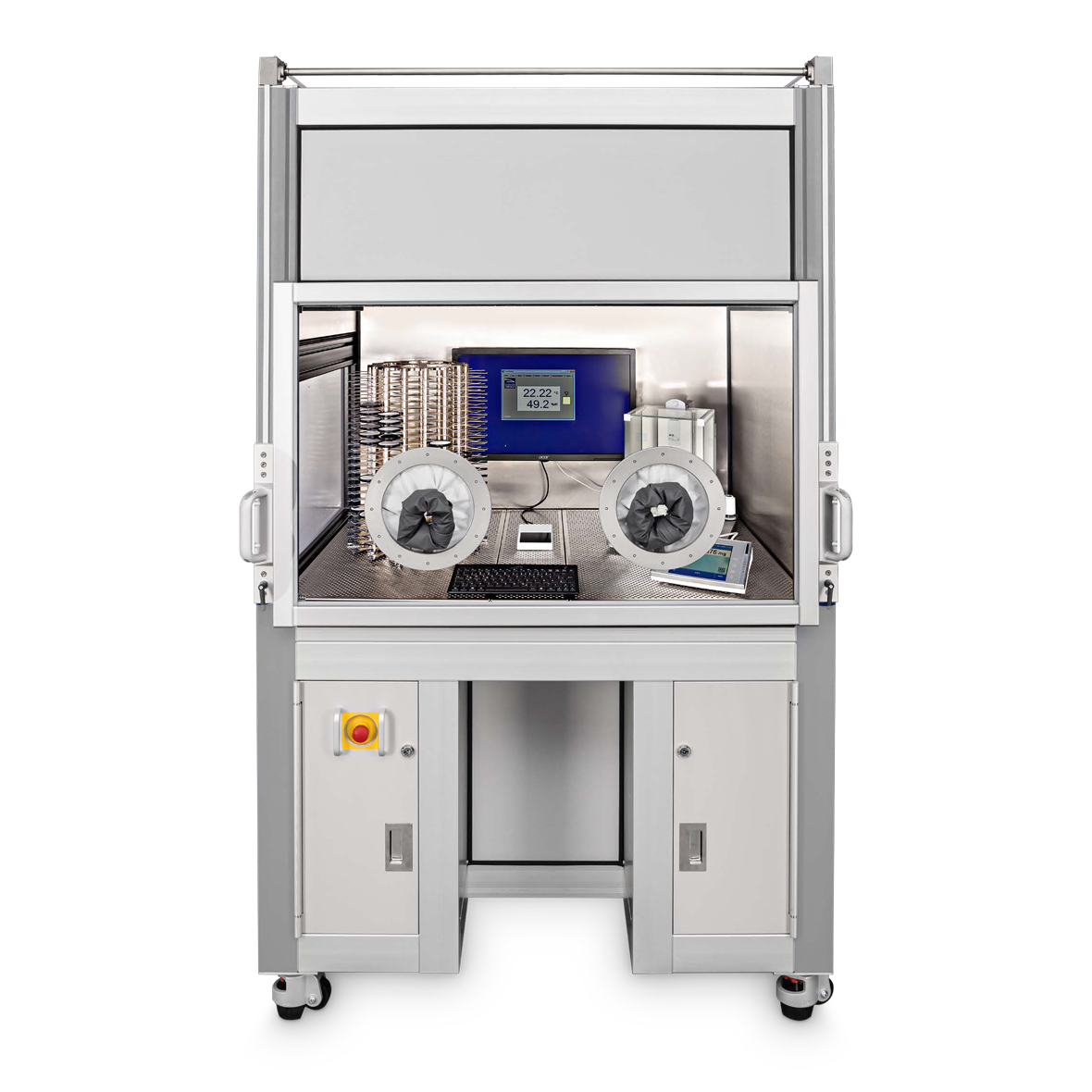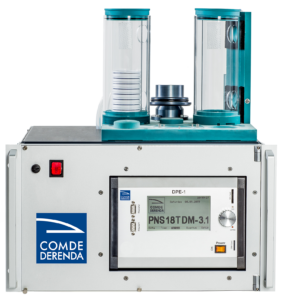System configuration
The manual weighing system MWS-1 consists of the following principal components:
- Dustproof weighing chamber with:
- Filter disc magazines for holding filters before and after weighing
- Ultra-microbalance (optional, most existing balances can be integrated after modification)
- Fan filter unit (FFU) to protect the weighing chamber against contamination
- RFID station for coding and identifying filters
- Ionization system for neutralizing the filters (“eliminating” static electricity) (optional)
- Climate control unit
- PC and monitor for operating the system (optional)
- Control and power supply cabinet underneath the weighing chamber
Operating principle and weighing process
Before the first weighing operation is performed, the unladen sampling filters are placed in filter trays by hand and introduced into the weighing chamber of the MWS-1. In order to identify the filters, they are held above the RFID station in their individual filter trays and coded in a contactless operation. They are then placed in the filter magazine and conditioned for the desired time.
The next step is the first weighing series, which consists of weighing the unladen filters, usually in two weighing passes. The optional ionization system neutralizes the filters (“eliminates” the static electricity) and thus enhances weighing accuracy. Once the unladen filters have been weighed, they are taken out of the weighing chamber and made ready for sampling.
After sampling, the filters are returned to the filter trays, introduced into the weighing chamber and conditioned again. The second weighing series (weighing the laden filters) follows, once again with two or possibly three weighing passes. Previously coded filters can be identified by the RFID station, which allows the laden reading to be compared directly with the preceding unladen reading. Both before and during the weighing series, verification weighing operations can be performed with reference filters in order to monitor the climatic conditions inside the weighing chamber. During the weighing operation, all the data (weighed values, mean values, weight difference between unladen and laden filters, and ancillary data, such as temperature and relative humidity) are saved in the database on the system PC.
The saved data can subsequently be exported for analysis and processing. The concentration of particulate matter in the exhaust gas is calculated from the weight difference between the laden and unladen filters, giving consideration to the air flow rate during the collection period.
Benefits
Compared with lab weighing, the MWS-1 offers the benefits of a contamination-free workplace designed specifically for weighing filters. The connected system PC facilitates reliable recording of the weighing results, comparisons between individual weighing passes, and continuous monitoring of the climatic conditions. The system rules out inaccurate records and delivers reliable, precise results by manual weighing. An integrated filter magazine can accommodate a large number of filters in a protected environment. The optional climate control unit maintains the necessary climatic conditions throughout the entire process.
Detailed information is contained in the data sheet “Manual Weighing System MWS-1”.
The information on this website represents the state of knowledge at the time of writing. Technical specifications are subject to modifications. Comde-Derenda GmbH accepts no liability whatsoever for the content provided or for damages resulting from the use of its products.







